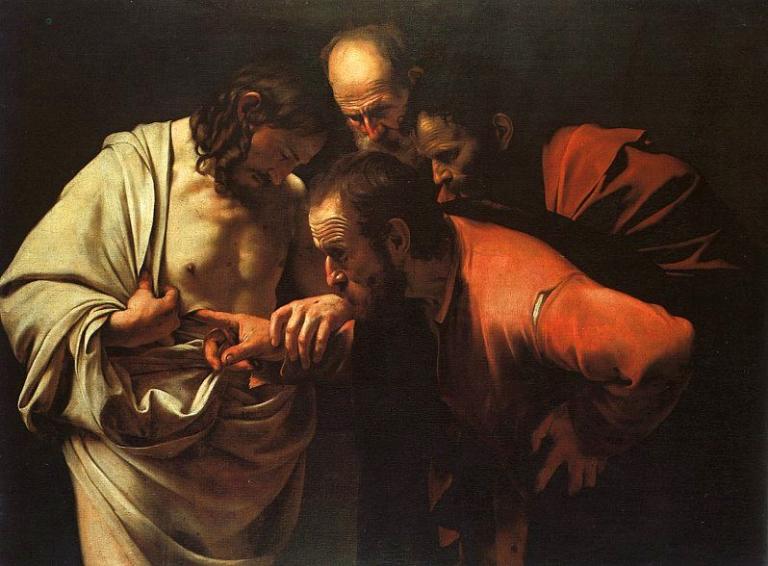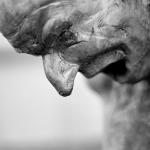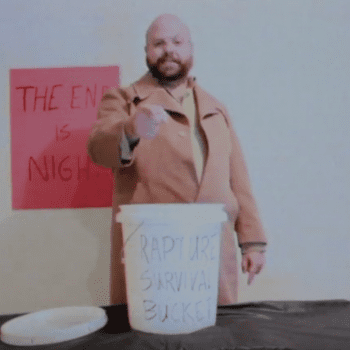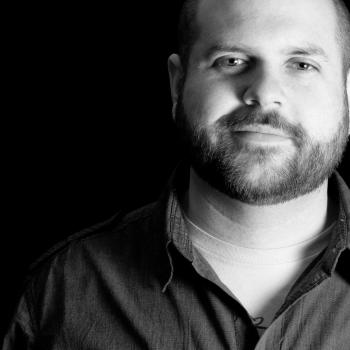I originally intended to share this post last week, but writing about getting angry with God took a little longer than I expected.
So, this post is kind of hanging out by itself this week. But for me, it’s an important wrap up to everything I had to say about the problem of evil and how it’s such a great challenge to Christianity.
It’s not that I think I’ve found a way resolve the problem of evil. Far from it. But I wanted to share something that helps ease some of the tension for me between my belief in a loving God and the presence of so much evil and suffering in the world.
Now, the source of that relief is not what you might think.
I don’t believe that God allows things like the Holocaust to happen as a necessary part of some mysterious divine plan that we simply won’t understand until we get to heaven.
Honestly, I’m not really sure where we get that idea from. As far as I’m aware, there’s nothing explicit in scripture that supports the idea that God wants evil and suffering as part of a mysterious plan that will be revealed at the end of all things. So, I have to wonder if it’s just something we’ve created to try and makes sense out of senseless suffering.
But more important than the source of this bad idea is our lack of thinking through the implications of that belief.
Suppose that God does indeed desire the presence of evil, along with our pain and suffering, in order to accomplish some mysterious will. If that is the case, then it seems to me we are left with some rather undesirable options. Either God is a malicious God who desires evil or God doesn’t really care about our present suffering because God has bigger things on God’s plate or God is simply incompetent because God couldn’t figure out some other plan that didn’t require things like rape, child abuse, and the Holocaust.
No matter which option we choose, we’re left with a God that is neither loving nor worthy of our worship.
Which is why I think it’s critical that we never forget that the promise of Revelation is that one day suffering and death will be no more; not that they will be redeemed as part of some elaborate and ultimately perverse plan.
Now, this doesn’t mean I think that God isn’t at work in the world as part of some ultimate plan.
I do.
But I am convinced that we can believe in God’s promise of a new heaven and a new earth without having to believe that the presence of evil is somehow required in order to usher in that new creation. That is to say, I do not believe that evil is a necessary prerequisite for a new heaven and a new earth. Rather, I believe that God’s promised new creation is a response to the suffering and evil of this world.
When I read the Gospels, I see a God so heartbroken over the state of the world that He put on flesh and dwelt among us in order to bring about an end to suffering and death, not embrace them as part of His divine will.
And when I read a book like Revelation, I hear God saying, “Things are not how I want them to be, so I will make all things new,” not, “See! Suffering and death have been part of my plan all along.”
So, I absolutely do believe that in spite of all the pain and suffering we experience in life, God does have an ultimate plan of healing and restoration. However, in all our talk about resurrection and pearly gates and golden streets, there’s a critical detail we often overlook.
It comes in the fifth chapter of John’s revelation and it’s easy to miss, but it’s a fascinating detail that speaks volumes about God’s response to our pain.
In verse 6, John writes,
Then I saw between the throne and the four living creatures and among the elders a Lamb standing as if it had been slaughtered…
Obviously, that’s a reference to Jesus.
But have you ever really stopped to think about what it means?
And what it says about God?
Now, clearly, Revelation is apocalyptic literature and can’t be taken literally. We shouldn’t read this passage and expect there to be a literal slaughtered lamb in heaven. That would be, well, weird and more than a bit morbid. But this passage does point us to a more literal, deeper, and strangely hopeful truth.
Which can be found in the 20th chapter of John’s Gospel.
But Thomas (who was called the Twin), one of the twelve, was not with them when Jesus came. So the other disciples told him, “We have seen the Lord.” But he said to them, “Unless I see the mark of the nails in his hands, and put my finger in the mark of the nails and my hand in his side, I will not believe.”
A week later his disciples were again in the house, and Thomas was with them. Although the doors were shut, Jesus came and stood among them and said, “Peace be with you.” Then he said to Thomas, “Put your finger here and see my hands. Reach out your hand and put it in my side. Do not doubt but believe.” Thomas answered him, “My Lord and my God!” Jesus said to him, “Have you believed because you have seen me? Blessed are those who have not seen and yet have come to believe.”
We usually assume this passage is about doubt and having faith without needing proof.
Which is true, but there’s something else going on here as well.
Something we almost always miss.
I believe John is trying to tell us that there will be scars in heaven.
Remember, this is the resurrected Christ that John is describing. The body of Jesus that Thomas reaches out to touch is the same body Jesus will have throughout eternity. And it’s a body that’s not exactly perfect.
It has holes.
And scars.
And a story to tell.
I believe the holes in his hands and the scars on his back persist on the body of the resurrected Jesus as an eternal testimony to the truth God does cares about our suffering.
That God does takes our pain seriously.
And that we don’t suffer alone.
I believe the slaughtered lamb stands before the heavenly throne as a witness to all of creation that even in heaven God has not forgotten the tragedies of this life, nor will God act as if they never happened. To do so would not only trivialize the seriousness of our pain in the here and now, it would also call into question the very notion that God loves His creation.
For there is no love if there is no heartbreak when those we care for suffer, and no compassion if we do nothing to honor their pain.
Now, I know that Jesus having scars for eternity may not ease the tension of theodicy whatsoever for you and, to be honest, I don’t know how God will wipe away the tears I’ve shed over my wife’s multiple miscarriages or the loss of my grandfather to Parkinson’s disease or the seemingly infinite struggles and tragedies I continue to witness in the lives of those around me.
Nevertheless, the scars of Jesus do give me hope.
For me, they’re a testimony to the fact that our suffering is not a trivial thing to God – even in eternity.
To me, they stand as an everlasting witness to the truth God that does take our pain seriously.
God could have wiped the past away from the resurrected body of Jesus, but His refusal to do so speaks to a God who continues to mourn with us even as He leads us to a place of healing.
And so I find hope in the scars of Jesus.
Hope that if our pain is that important to God, then maybe so is our healing.
Hope that in spite of all the evil that surrounds us, maybe one day God really will wipe every tear from our eyes.
Maybe one day death and mourning and crying and pain will finally and forever be no more.













